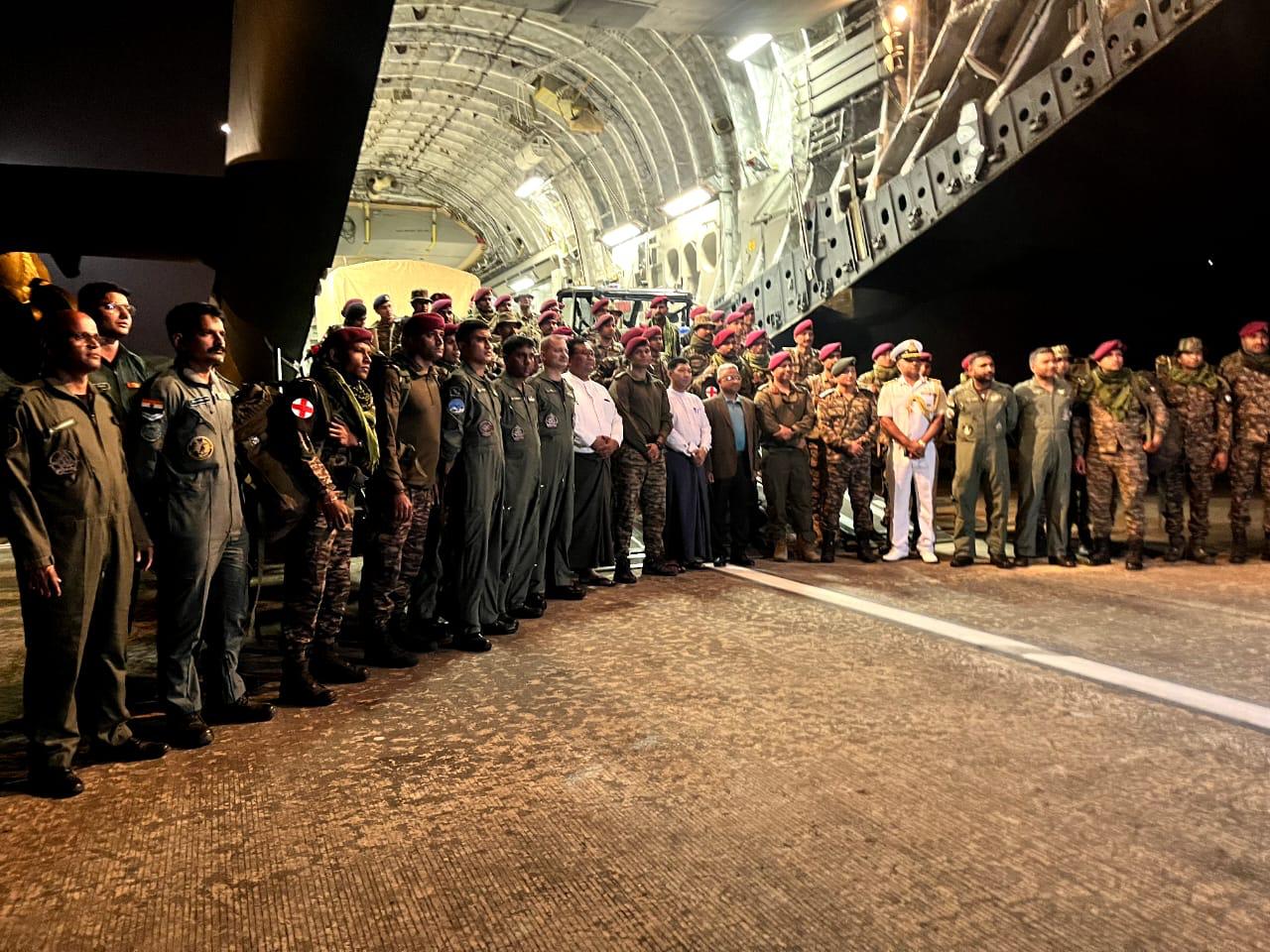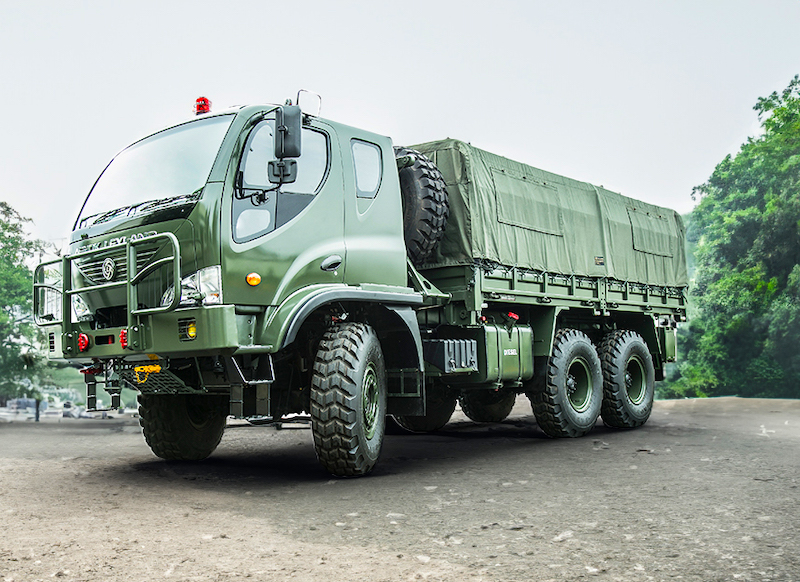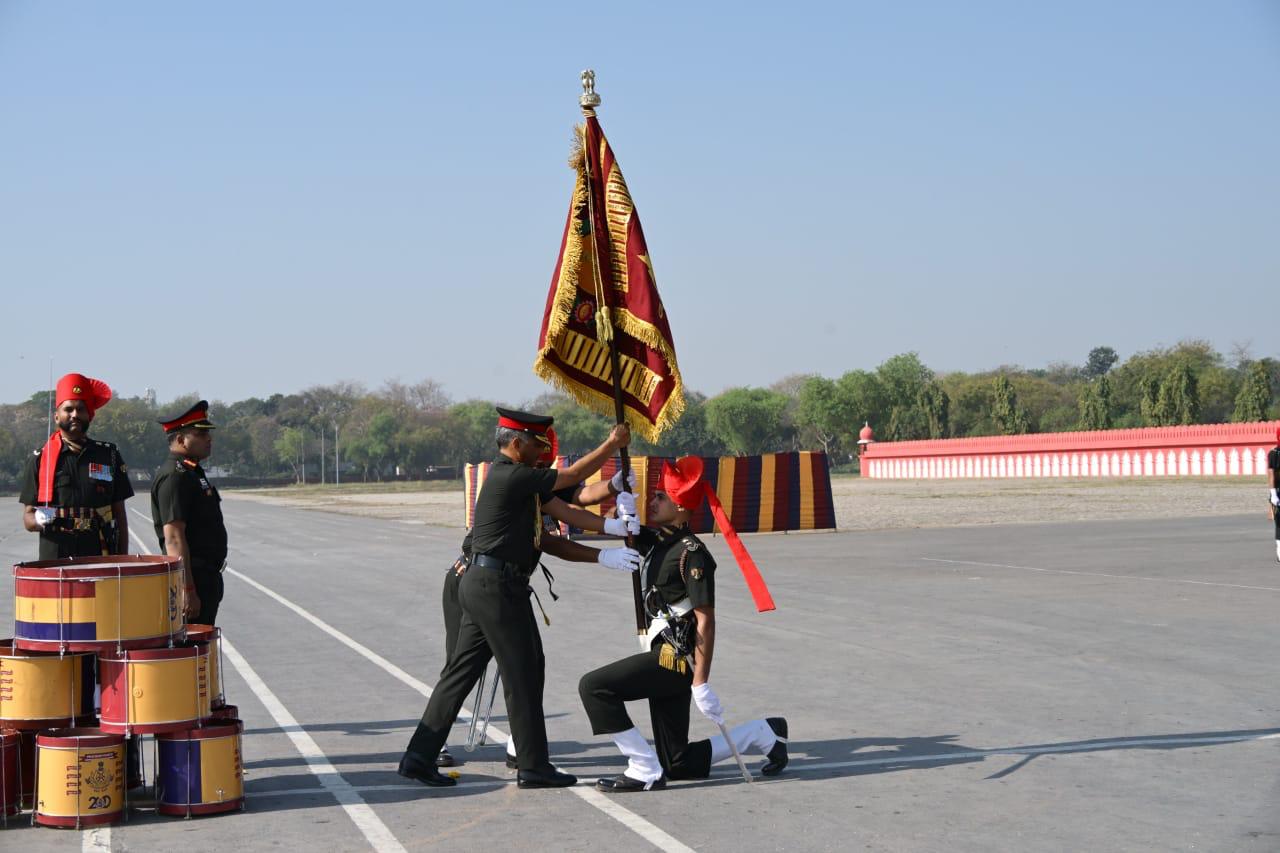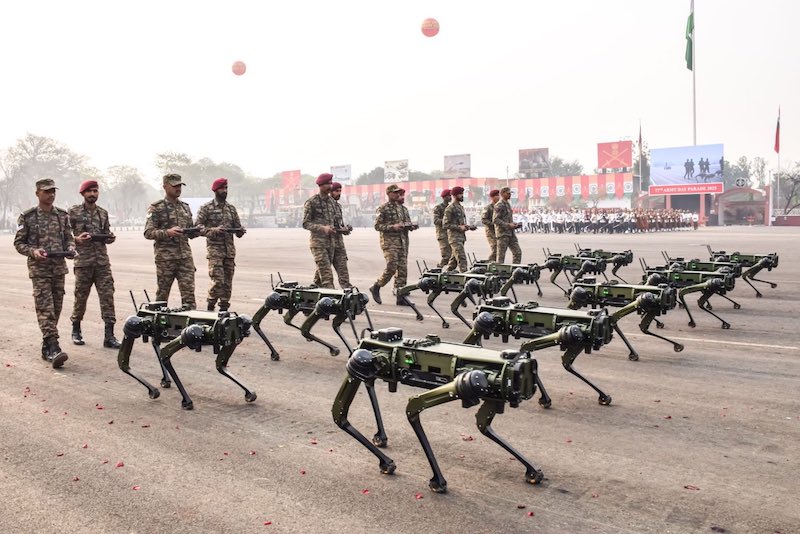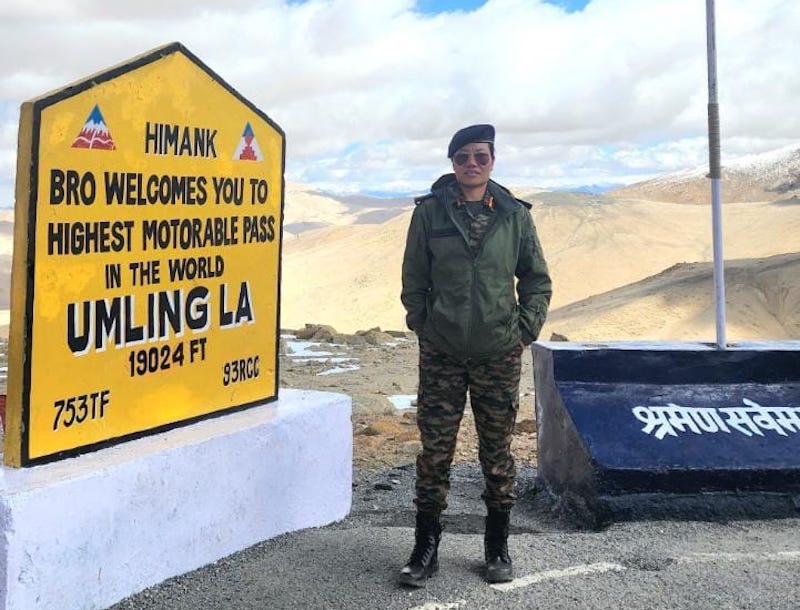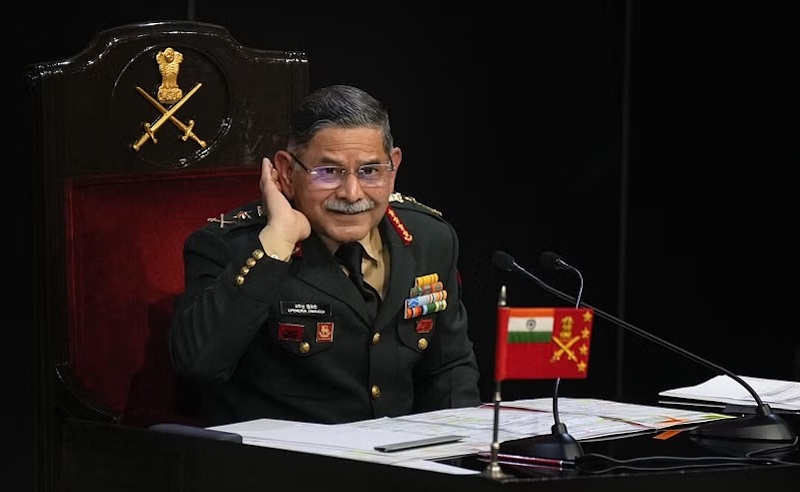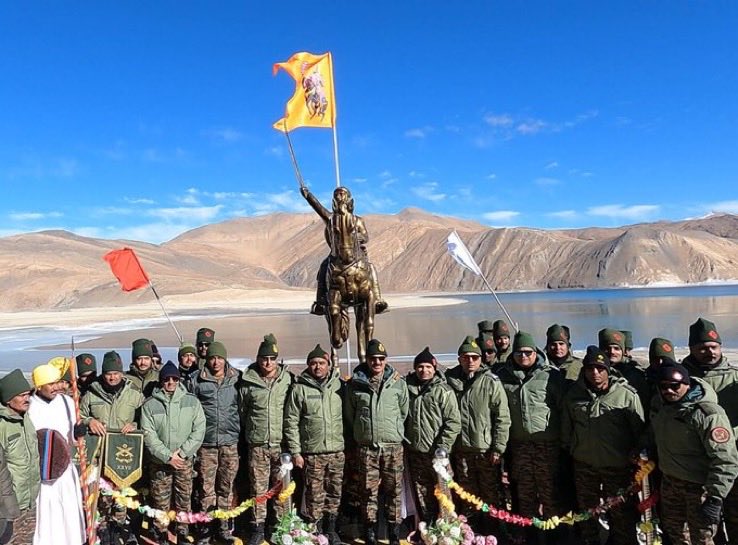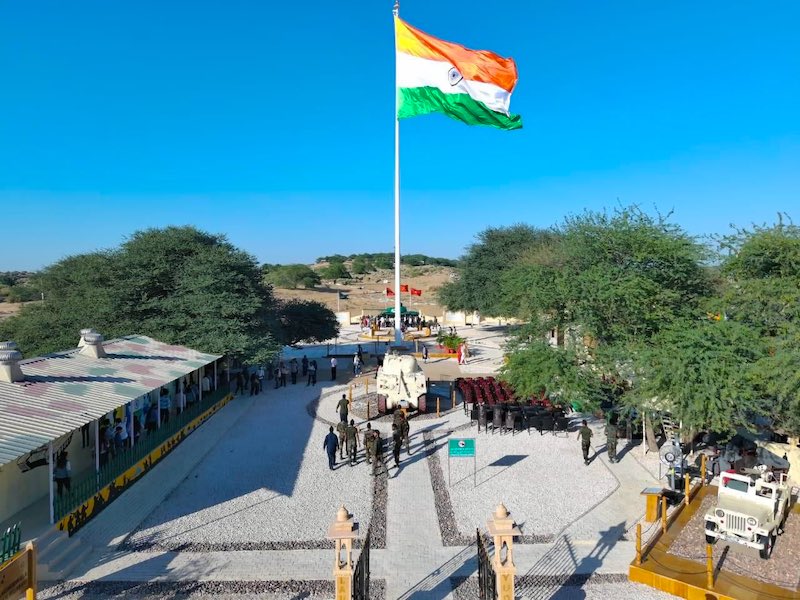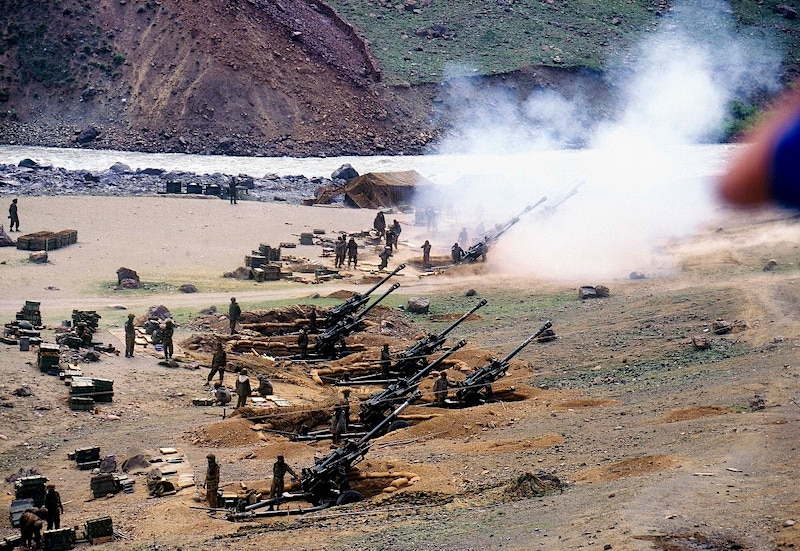 Bofors 155mm artillery guns firing at enemy positions during the 1999 Kargil conflict. (File photo)
Bofors 155mm artillery guns firing at enemy positions during the 1999 Kargil conflict. (File photo)
“Sarvatra Izzat-o-Iqbal (Everywhere with Honour and Glory)”
~ Regiment of Artillery Motto
Gunners’ Day, celebrated annually on September 28, marks a momentous day for the Indian Army’s Regiment of Artillery. This day commemorates the establishment of the first artillery unit in 1827, during the British East India Company’s governance. Throughout its history, the Regiment of Artillery has played a pivotal role in shaping the battlefield capabilities of the Indian Army.
Let’s explore the history, achievements, contributions, and distinguished officers of the Regiment of Artillery, alongside the prestigious gallantry awards it has won.
Historical Background of Regiment of Artillery
Artillery, which is also known as “God of War”, has been an indispensable wing of any army in the world since the Chinese started using gunpowder in cannons to fight wars in the 12th century. The first use of artillery in India was recorded at the Battle of Adoni during the Bahmani-Vijayanagar War, which took place in 1368.
In the Deccans the Bahamani kings, led by Mohammed Shah I of the Bahmani Sultanate, used a train of artillery against the king of Vijayanagar, Kapaya Nayaka.
The evolution of modern artillery can be traced to the latter part of the 1800s. During this period, several key innovations transformed the field: the introduction of steel in manufacturing gun barrels, the creation of more potent propellants, and the invention of recoil-absorbing mechanisms that stabilized artillery pieces during firing.
However, before that happened, the regimentation of artillery units was taking shape in India.
On September 28, 1827, the British East India Company’s 5 (Bombay) Mountain Battery, initially known as the 8th Company of the Golandaz Battalion, Bombay Foot Artillery, was formed as part of the Bombay Army, which operated under the Bombay Presidency – one of the three major presidencies that the British ruled over in India at that time. This was the first unit of – what would become – the Regiment of Artillery.
This unit was also the first to be manned by native Indian soldiers, marking a significant move towards self-reliance and military competence during British rule. The battery specialized in providing artillery support in mountainous terrain, setting the precedent for the modern Indian Army’s versatile artillery units.
The artillery’s role in supporting infantry and armoured units through firepower has been paramount in various campaigns, from colonial-era battles to modern-day conflicts.
Following India’s independence in 1947, the Regiment of Artillery played a decisive role in numerous operations, including the wars of 1947-48, 1965, 1971, and the Kargil War of 1999. It has evolved from utilizing basic artillery pieces to now operating sophisticated systems such as multi-barrel rocket launchers, guided missiles, and advanced radar systems.
Major Achievements of Artillery Regiment
Over the years, the Regiment of Artillery has been integral to India’s military successes.
During World War II
During Word War II (Second World War), Indian artillery units saw action across various theatres, including Malaya, Burma, East and North Africa, the Middle East, and Italy. Notable units that participated include:
– 4 Maratha Anti-Tank Regiment in Italy
– 22 Mountain Battery and 1 (Jammu & Kashmir) Mountain Battery in East Africa
– 1 (Jammu & Kashmir) Mountain Battery in Syria
– 27 and 18 Indian Mountain Batteries in Aden
– 1 Indian Anti-tank Regiment and 4 Maratha Anti-Tank Regiment in Iraq
– 2 Indian Field Regiment in North Africa
– 22 Mountain Regiment in Malaya
– Multiple regiments in Burma, including field, mountain, anti-tank, survey, and anti-aircraft units
Gallantry Awards During World War II
By the end of World War II, Indian gunners had been awarded numerous accolades, including one Victoria Cross, one George Medal, 15 Military Crosses, two Indian Order of Merits (IOMs), 22 Indian Distinguished Service Medals (IDSMs), 18 Military Medals, five Most Excellent Orders of the British Empire [Officer] (OBEs), one Most Excellent Order of the British Empire [Member] (MBE), three British Empire Medals (BEMs), 13 Burma Gallantry Medals, and 467 “Jangi Inams” (War Decorations).
In recognition of their outstanding contribution, Indian Artillery earned the-then esteemed title of “Royal” in 1945. Initially known as the “Indian Regiment of Artillery”, it was renamed “The Regiment of Indian Artillery” on November 1, 1940, and subsequently “Royal Regiment of Indian Artillery” in October 1945, following its exemplary performance in World War II.
The title “Royal” was dropped when India became a republic on January 26, 1950.
Post-Independence
At the time of Independence, Indian Artillery comprised various branches, including Field, Medium, Air Defence, Counter Bombardment, Coastal, Air Observation Post, and Survey. Following the Partition in 1947, the Royal Indian Artillery was divided, with India retaining eighteen and a half regiments while the remaining nine and a half units were allocated to Pakistan.
The Regiment of Artillery participated in all five major wars following Independence:
– India-Pakistan War of 1947-48: Artillery units were instrumental in holding key positions and repelling enemy attacks in the challenging high-altitude terrain of Kashmir.
– India-China War of 1962: Despite the unfavourable outcome, artillery units performed valiantly under extreme conditions, inflicting considerable damage on the enemy despite being outgunned and ill-prepared.
– India-Pakistan War of 1965: The artillery's firepower was decisive in neutralising enemy armour and fortifications, particularly in the Battle of Asal Uttar, where Indian forces decimated a significant number of Pakistani tanks.
– India-Pakistan War of 1971: This conflict, leading to the creation of Bangladesh, saw the artillery play a crucial role in both Eastern and Western theatres, providing overwhelming fire support that facilitated swift Indian victories.
– Kargil War of 1999: Operating in some of the world's most challenging high-altitude terrains, Indian artillery units bombarded enemy positions on the ridges of Kargil, aiding in the recapture of critical points like Tiger Hill and Tololing. The Bofors guns gained particular praise for their accuracy and reliability in extreme conditions.
Gallantry Awards Post-Independence
The Regiment of Artillery has been recognized numerous times for its valour and dedication. Several of its officers and soldiers have received prestigious gallantry awards, including the Maha Vir Chakra (MVC), Vir Chakra (VrC), and Sena Medal (SM).
Notable recipients include:
– Ashok Chakra: Major D Sreeram Kumar
– Maha Vir Chakra: Major General Mohindar Singh, Major Sushil Kumar Mathur, Captain Dara Dineshaw Mistry, Brigadier Kailash Prasad Pande, Captain Pradip Kumar Gour, Second Lieutenant Shyamal Dev Goswami, Captain Pratap Singh
– Kirti Chakra: Major Braj Kishore Sharma, Major Kumandur Prabhakar Vinay, Major Sukhwinder Jeet Singh Randhawa, Major Krishna Murthy Balasubramaniam, Major Gurcharan Singh, Captain (later Colonel) Arjun Singh Guleria, Havildar Indra Bahadur Gurung, Lance Naik Attar Singh
Role of Women in Artillery Regiment
A significant and progressive milestone in recent times is the induction of women officers into the Regiment of Artillery. This move marks a historic shift towards gender equality in the Indian Army. In January 2023, the Army opened the doors of its artillery units to women officers for the first time. Subsequently, five women officers were inducted into the regiment, paving the way for greater participation by women in combat roles.
As of January 2024, four women officers from the artillery regiment – Lieutenants Deepti Rana, Priyanka Sevda, Aadya Jha, and Enoni CH – made history by commanding mechanized columns at the Republic Day parade. They showcased cutting-edge artillery systems such as the Pinaka multi-barrel rocket launcher and the Swathi weapon-locating radar, symbolizing the significant strides made by women in the Army.
Additionally, the Army has begun the process of promoting women officers to command posts, previously reserved for men. In a move toward gender parity, women in various branches, including the artillery, are being promoted to colonel ranks and beyond, marking a new era of leadership.
Artillery Equipment Currently in Use
The Regiment of Artillery employs a wide range of equipment, including:
– Light Artillery (Mortars): 120mm E1 Light Mortar, FV433 Abbot SPG
– Field Artillery: 105mm Indian Field Gun and Light Field Gun
– Medium Artillery: 130mm M-46 Field Gun (including 155 mm upgraded versions), 155mm Haubits FH77/B Howitzer, 155mm Dhanush (howitzer), 155mm M777 howitzer
– Self-propelled Artillery: 155mm K9 Vajra
– Rocket Artillery: 122mm BM-21 Grad Multiple Barrel Rocket Launcher, 214mm Pinaka Multi Barrel Rocket Launcher, 300mm BM-30 Smerch Multiple Barrel Rocket Launcher
– Missile Artillery: Brahmos Missile System, Pinaka Multi Barrel Rocket Launcher
– Surveillance & Target Acquisition: WLR (weapons-locating radar) System, LORROS (long-range reconnaissance and observation systems), MBFSR (medium-range battlefield-surveillance radar) System
Future of the Regiment of Artillery
The Regiment of Artillery is poised for further modernization with ongoing projects to enhance its firepower and accuracy. By 2040, all medium artillery regiments will be converted to 155mm standard as part of the “Field Artillery Rationalisation Plan” (FARP), cleared in 1999.
Systems such as the advanced towed artillery gun system (ATAGS), being developed indigenously, aim to make India self-reliant in artillery capabilities. The regiment is also integrating advanced technologies such as drones and smart munitions, which will revolutionise its operational capacity in future conflicts.
Notable Artillery Officers
The Regiment of Artillery has produced numerous officers who have gone on to lead the Indian Army and contribute to national security. Some of the prominent names include:
State and Union Territory Governors and Lieutenant Governors
– General Om Prakash Malhotra, PVSM – Punjab (1990-1991)
– Lieutenant General Jack Farj Rafael Jacob, PVSM – Goa (1998 to 1999) and Punjab (1999 to 2003)
– Lieutenant General Krishna Mohan Seth, PVSM, AVSM – Tripura (2002-2003), Chhattisgarh (2003-2007) and Madhya Pradesh (2004)
– General Sunith Francis Rodrigues, PVSM, VSM – Punjab (2004-2009)
– Lieutenant General Madan Mohan Lakhera, PVSM, AVSM, VSM –Mizoram (2006-2011), lieutenant governor of Puducherry (2004-2006) and Andaman & Nicobar Islands (2006)
– Captain Shekhar Dutt, SM, IAS – Chhattisgarh (2010-2014)
Chiefs of Army Staff:
– General Paramasiva Prabhakar Kumaramangalam DSO, OBE (June 7, 1966 – 7 June 1969)
– General Om Prakash Malhotra PVSM (May 31, 1978 – May 31, 1981)
– General Sunith Francis Rodrigues PVSM, VSM (June 30, 1990 – June 30, 1993)
– General Sundararajan Padmanabhan PVSM, AVSM, VSM (September 30, 2000 – December 31, 2002)
– General Deepak Kapoor PVSM, AVSM, SM, VSM (September 30, 2007 – March 31, 2010)
Gunners’ Day stands as a tribute to the bravery, sacrifice, and steadfast commitment of the Regiment of Artillery. As the regiment celebrates another Gunners’ Day, it stands tall as a symbol of resilience and strength in the Indian Army.
Follow us on social media for quick updates, new photos, videos, and more.
Twitter: https://twitter.com/indiasentinels
Facebook: https://facebook.com/indiasentinels
Instagram: https://instagram.com/indiasentinels
YouTube: https://youtube.com/indiasentinels
© India Sentinels 2024-25


